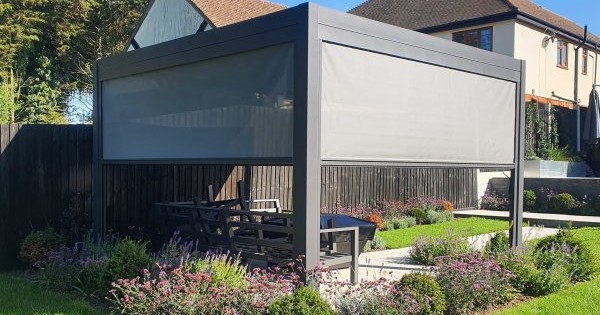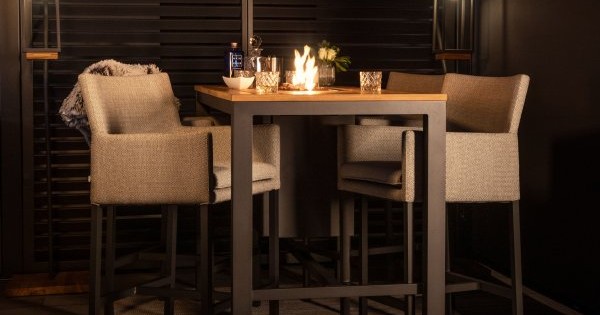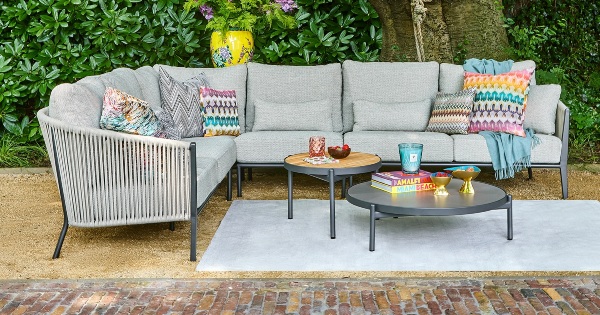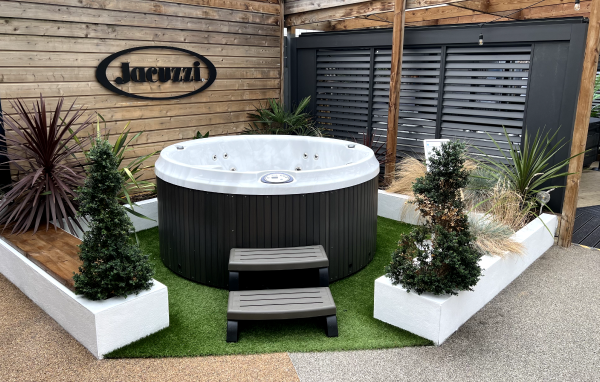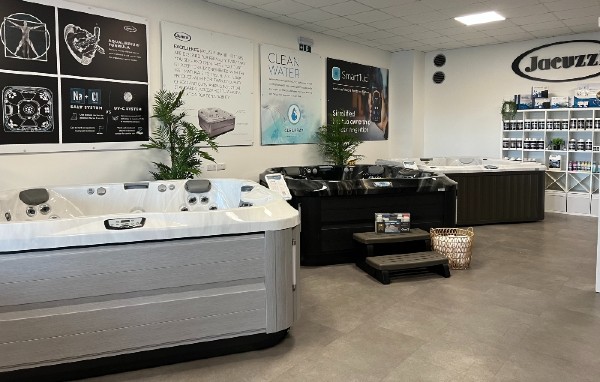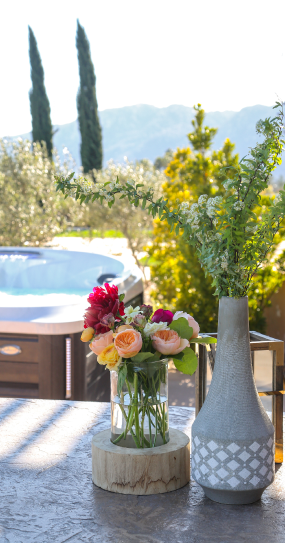Choosing the Perfect Hot Tub for Hydrotherapy
Finding the perfect hot tub for hydrotherapy benefits can be daunting when you start researching hot tubs. Choosing the right hot tub for sale in Northern Ireland can be overwhelming, but we’re here to guide you through it, just as we’ve helped countless others.
A Familiar Scenario:
Allow us to introduce you to Jane, a dedicated professional living in Northern Ireland. She endures long hours at her desk, battling the stress and strains that come with her demanding job. Jane was recommended to try hydrotherapy as a natural solution to alleviate her aches, enhance her sleep, and reduce stress. Eager to experience these benefits, Jane begins her quest by researching hot tubs online. However, she soon finds herself inundated with an overwhelming array of options and contradictory advice, leaving her bewildered and unsure about which hot tub can genuinely cater to her hydrotherapy needs.
Now picture this:
Jane discovers a world where she can effortlessly slip into the warm embrace of her very own hot tub, nestled in the tranquillity of her Northern Ireland garden. As she immerses herself in the gentle caress of hydrotherapy, her muscle tension melts away, and her mind finds solace. Her sleep improves, stress levels plummet, and life regains its manageability. She awakens each day with newfound vigour, ready to face life’s challenges.
But how did Jane arrive at this point?
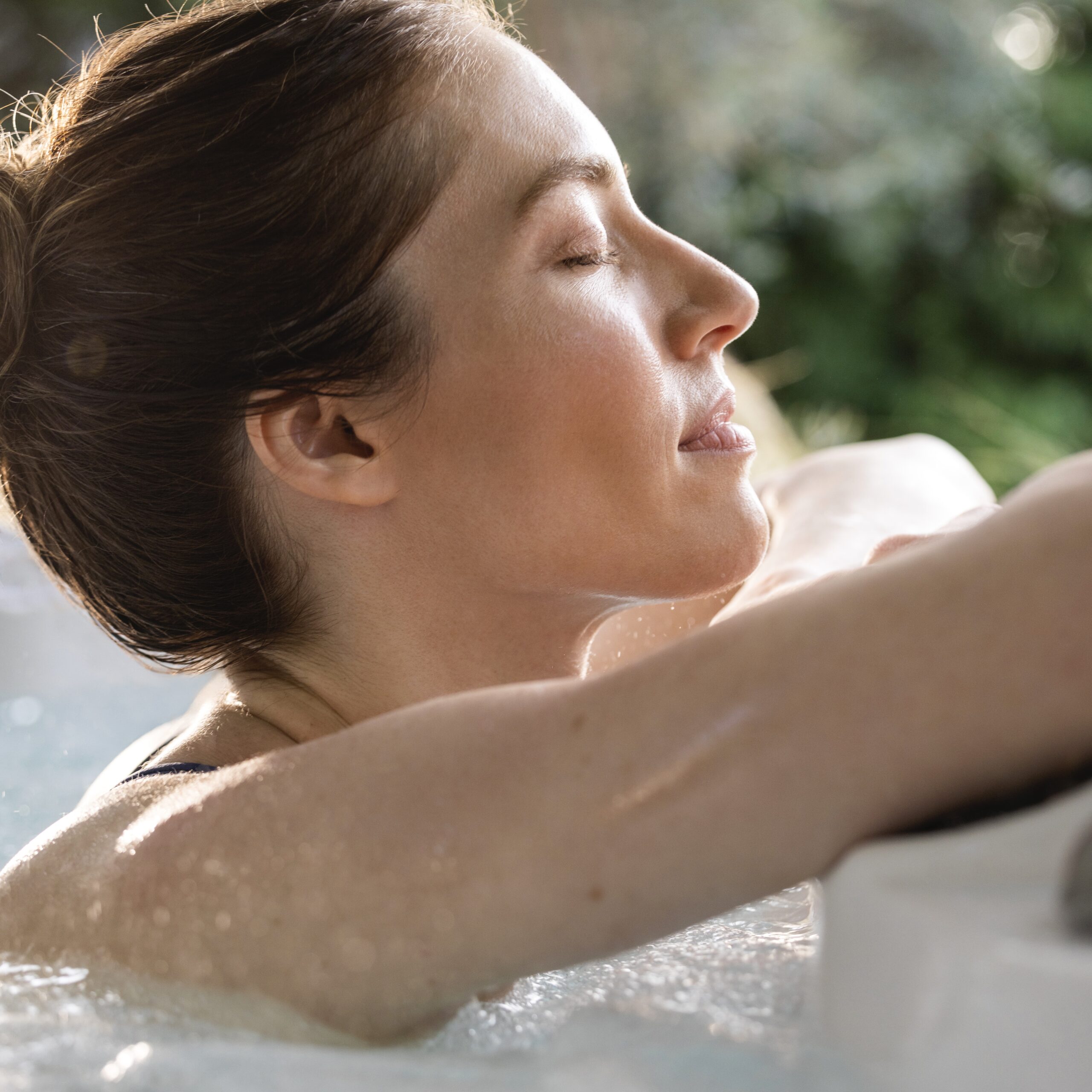
A step-by-step guide to finding the perfect hot tub for your hydrotherapy needs.
Step 1: Determine Your Needs
With Jane’s story as our backdrop, let’s now transition into our step-by-step guide to help you find the perfect hot tub for your hydrotherapy needs.
Start by identifying your hydrotherapy goals and preferences. Determining your hydrotherapy requirements is an essential first step in finding the perfect hot tub. To begin, take some time to consider your health and wellness goals. Identify specific areas in which you seek relief, such as muscle pain, arthritis, or stress. Think about the therapeutic benefits you desire and the outcomes you hope to achieve.
You should also factor in your available space and budget, ensuring that the hot tub you choose aligns with both practical constraints and financial considerations. Whether you want to target muscle tension, improve sleep quality, or reduce stress levels, clearly identifying your hydrotherapy needs will provide a solid foundation for selecting a hot tub that meets your unique needs.
This self-awareness will not only streamline the decision-making process but also ensure that your chosen hot tub becomes a personalised oasis for your well-being.

Step 2: Understanding Your Options.
We recognise that choosing the right hot tub can be overwhelming. Deciding on the ideal hot tub for your hydrotherapy journey involves checking out a variety of choices, each designed to suit different preferences, lifestyles, and therapeutic needs. Let’s break it down!
Inflatable Hot Tubs
An inflatable hot tub, also known as a blow-up hot tub, is a type of hot tub that is made from durable materials such as PVC or vinyl. It is designed to be easily set up and inflated using a pump. Once inflated, it can be filled with water and connected to a standard electrical outlet to heat the water and power the jets. An inflatable hot tub can also be set up from a box kit you can buy in-store or online, assembled quickly, and then deflated easily and stored when not in use.
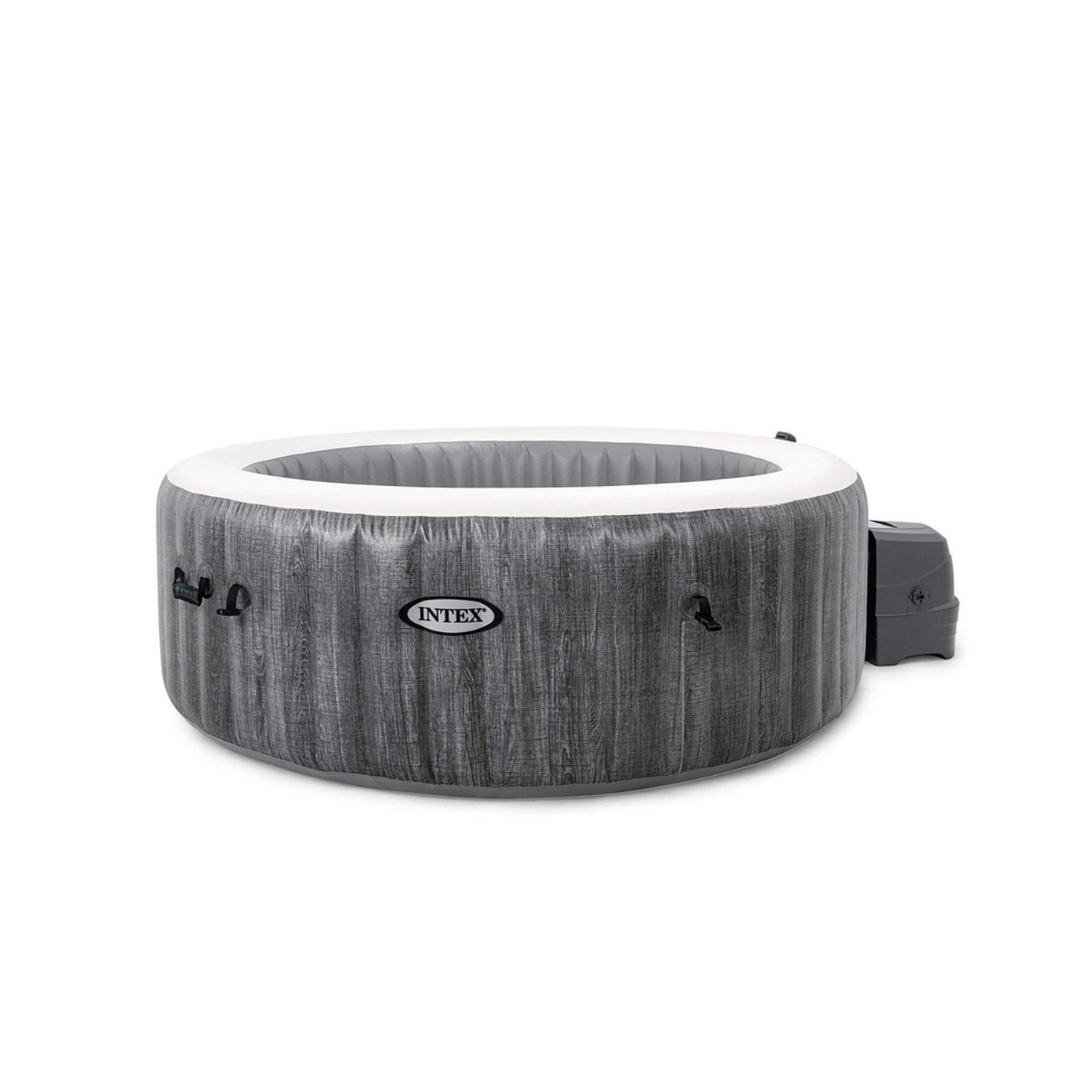
Wood-burning hot tubs
A wood-burning hot tub, known as a “natural” or “wood-fired” hot tub, represents a traditional approach to hot tubs. These hot tubs are often crafted from cedar or redwood, boasting a rustic and natural aesthetic that complements outdoor settings. To heat the water, users must manually load and tend to a fire in the stove. Wood-fired hot tubs are typically round and can accommodate between 3 to 10 people. Depending on the brand and model, the setting up can vary, taking around 3 hours or more. Most wood-fired hot tubs do not feature jets or filtration systems; any that do are usually powered by electricity.

Hard shell hot tubs
Hard shell hot tubs are fully self-contained, freestanding hot tubs. Essential components such as the heater, pumps and plumbing are all contained within the cabinet. Hard shell hot tubs in Northern Ireland come in a diverse spectrum of quality to suit different budgets with varying levels of hydrotherapy capabilities. The quality of a hard shell hot tub can range from basic models with limited features to high-end options equipped with advanced hydrotherapy systems. When considering a hard shell hot tub, it’s essential to evaluate the reputation of the manufacturer, the jet configurations, and the water therapy capabilities offered to find the one that best suits your preferences and requirements.

Step 3: Evaluating The Options
-
What is hydrotherapy - Are hot tubs good for hydrotherapy?
-
-
What are the benefits of hydrotherapy?
-
The benefits of hydrotherapy include:
Muscle Relaxation: Warm water helps muscles relax, reducing tension and promoting overall relaxation.
Joint Relief: Buoyancy in water reduces the impact on joints, offering relief for conditions such as arthritis or joint pain.
Improved Circulation: Hydrotherapy stimulates blood flow, which can enhance circulation and cardiovascular health.
Pain Management: It can alleviate various types of pain, including back pain, muscle soreness, and chronic pain conditions.
Stress Reduction: Immersion in warm water and the massaging effect of water jets contribute to stress relief and mental relaxation.
Enhanced Sleep: The relaxation induced by hydrotherapy can improve sleep quality and promote a restful night.
Increased Range of Motion: Water’s buoyancy supports movement, making it easier to perform exercises and improve flexibility.
Rehabilitation: Hydrotherapy is commonly used in rehabilitation programmes for injuries, helping to restore strength and mobility.
Mood Improvement: The release of endorphins during hydrotherapy can positively impact mood and contribute to overall well-being.
-
How does your hydrotherapy experience differ between different types of hot tubs?
-
Inflatable Hot Tub:
Hydrotherapy Approach: Inflatable hot tubs primarily provide a basic hydrotherapy experience. The inflatable structure generally only has a ring of air jets that move water, typically offering a primary relaxing effect.
Benefits: While inflatable hot tubs may lack advanced features, they still allow users to experience the therapeutic effects of warm water, promoting muscle relaxation and joint relief.
Wood-Burning Hot Tub:
Hydrotherapy Approach: Wood-burning hot tubs provide a foundational hydrotherapy experience that demands thoughtful planning and scheduling. While delivering the essential benefits of warm water and buoyancy, these tubs commonly lack advanced therapeutic features and typically come with bench-type seating. Although certain models have integrated basic filtration and jet placement to enhance the overall hydrotherapy experience, it’s worth noting that this addition requires electricity, somewhat counteracting the simplicity characteristic of a wood-fired hot tub.
Benefits: This approach provides a more immersive and contemplative experience, harmoniously complementing the therapeutic benefits of warm water immersion. Users can indulge in a profound sense of relaxation, fostering tranquility and enhancing the overall therapeutic impact.
Hard Shell Hot Tub:
Hydrotherapy Approach: A hard-shell hot tub stand out for those seeking a comprehensive hydrotherapy experience. Its robust construction allows for the seamless integration of numerous powerful water jets, comfortable seating options, precise temperature control, and efficient water maintenance. Designed for frequent use and with user-friendly features, you can customise your experience with add-ons like LED lighting and music systems.
Benefits: The advanced features of hard shell hot tubs, including adjustable jet pressure, varied massage styles, and customisable settings, align with the principles of hydrotherapy. These hot tubs provide a more tailored and intense hydrotherapeutic experience, promoting muscle relaxation, increased blood circulation, and overall well-being.
In summary, while inflatable and wood-burning hot tubs offer simpler hydrotherapy experiences, focusing on the essential benefits of warm water immersion, hard shell hot tubs provide a more sophisticated approach with advanced features designed to maximise the therapeutic advantages of hydrotherapy. The choice between these types depends on individual preferences, desired features, and the level of immersion in hydrotherapeutic principles.
-
What features should be considered when choosing a hot tub for a better hydrotherapy experience?
-
When selecting a hot tub for optimal hydrotherapy, it’s important to prioritise certain features. Here are some things to consider:
Jet Placement and Type: Look for a hot tub with strategically placed jets that target key muscle groups. Varied jet types, such as pulsating or rotating, offer diverse massage options.
Adjustable Jets: Choose a hot tub with adjustable jet pressure so you can tailor the massage intensity to your preferences.
Seating Design: Opt for a hot tub with ergonomically designed seats to ensure comfort during hydrotherapy sessions. Different seating depths and configurations can accommodate various body sizes and preferences.
Water Temperature Control: Prioritise hot tubs with precise temperature control settings, allowing you to customise water temperature for therapeutic benefits.
Filtration and Water Maintenance: Select a hot tub with efficient filtration systems to keep the water clean and hygienic. Easy-to-maintain features, such as ozone or UV-C sanitation systems, can enhance water quality.
Insulation: Look for well-insulated hot tubs to maintain water temperature efficiently, reducing energy costs and ensuring consistent warmth during hydrotherapy.
Construction Quality: Choose a hot tub with durable materials and construction to ensure longevity and resistance to wear and tear.
Ease of Use: Prioritise user-friendly controls and features for a hassle-free hydrotherapy experience.
Additional Features: Explore extra features like LED lighting, music systems, and aromatherapy options to enhance the overall relaxation experience.
By focusing on these features, you can choose a hot tub that caters to your specific hydrotherapy needs and preferences.
-
What are the price and general overviews for different types of hot tubs?
-
The cost-effectiveness of hot tubs for hydrotherapy depends on various factors.
Inflatable Hot Tubs:
Price Range: Inflatable hot tubs typically range from £200 to £1,500.
Pros: Generally more affordable upfront cost, and easy installation.
Cons: May have a shorter lifespan, potentially higher maintenance costs, and less insulation, leading to higher long-term higher operational costs.
Wood-Burning Hot Tubs:
Wood-burning hot tubs generally cost between £3,000 and £10,000 or more.
Pros: Lower operational costs as they rely on natural heating methods, durable construction, and a unique aesthetic appeal.
Cons: Higher initial cost than an inflatable, requires more effort in terms of maintenance and heating, and may have limited features compared to other types.
Hard Shell Hot Tubs:
Price Range: Hard shell hot tubs typically range from £4,000 to £18,000 or more.
Pros: Longer lifespan, better insulation for energy efficiency, and a wide range of features and customisation options.
Cons: Typically, hard shell hot tubs have higher upfront costs compared to other types, and their energy consumption may increase if insulation is poor.
Conclusion: While inflatable hot tubs may be more cost-effective initially, they might incur higher long-term maintenance and operational costs. Wood-burning hot tubs can be cost-effective in terms of energy usage but may have higher upfront costs and maintenance demands. Hard shell hot tubs, though more expensive upfront, offer durability, better insulation, and a variety of features, potentially making them cost-effective over the long term for those prioritising a comprehensive hydrotherapy experience. The choice ultimately depends on budget constraints, preferences, and the balance between initial investment and ongoing expenses.
(Keep in mind that these are rough estimates, and actual prices can be influenced by specific models, additional features, and market conditions. It’s advisable to explore various brands and models within each category to find the best fit for your preferences and budget.)
-
Do different types of hot tubs vary in how often they can be used?
-
Inflatable hot tub:
Generally suitable for frequent use. Check with manufacturer specs regarding advice on winter usage. Some inflatable hot tubs can not be used in colder temperatures.
Wood-Burning Hot Tub:
A wood-fired hot tub is traditionally emptied of water and cleaned after every use for hygienic reasons unless there is a filtration and sanitising system. Step-up and preparation is required when you want to use it.
Hard shell hot tub:
Designed for regular and frequent use, making it ideal for consistent hydrotherapy sessions.
-
What is the process of delivery and setup for different types of hot tubs?
-
Inflatable hot tub:
Typically easy to set up and can be done without professional assistance.
Wood-burning hot tub:
Requires some assembly and may not require a professional installation.
Hard shell hot tub:
Will need professional installation due to electrical connection and placement.
Step 4: Making Your Choice
Choosing the right hot tub can be challenging, but by weighing the pros and cons of the inflatable, wood-burning, and hard shell hot tub, you can make an informed choice that suits your needs and budget.
Following Jane’s lead, we recommend being pro-active with your decision-making process. Consider wet testing opportunities with reputable brands, particularly those renowned for specialising in hydrotherapy hot tubs like Jacuzzi®. By doing so, you gain hands-on experience, evaluating factors like jet variety and seating configurations, which offer invaluable insights into the hydrotherapy capabilities of each model.
Remember to consider your space and long-term goals when making your decision. And don’t forget the importance of shopping local to ensure you receive the knowledge, and after-sales support, and the service you deserve for your hot tub investment.

Step 5: Enjoy Hydrotherapy
After successfully navigating through the complexities of selecting the right type of hot tub to meet your hydrotherapy needs, it’s time to step into the world of hydrotherapy bliss. With your selection made, you are now ready to unlock the incredible benefits that await you.
Think of your hot tub as a personal sanctuary for relaxation and well-being. Immerse yourself in the warm embrace of hydrotherapy to begin your therapeutic journey.

Step 6: What’s Your Next Step?
As you contemplate your hydrotherapy journey, consider this: What will life be like without those aches and pains? How will improved sleep and reduced stress impact your daily life? We encourage you to ponder the areas where you’ve experienced challenges and discomfort, and then move forward towards experiencing the sheer bliss of hydrotherapy. What kind of relaxation and well-being do you seek? Your next step can lead you to a world where hydrotherapy at home becomes an integral part of your life.

Connect with Outback 365:
Ready to explore hot tubs for sale in Northern Ireland? Connect with us at Outback 365 – more than just a retailer, your partners in finding the perfect hot tub for your hydrotherapy needs. Trust Outback 365 Northern Ireland to be your go-to hot tub retailer.



